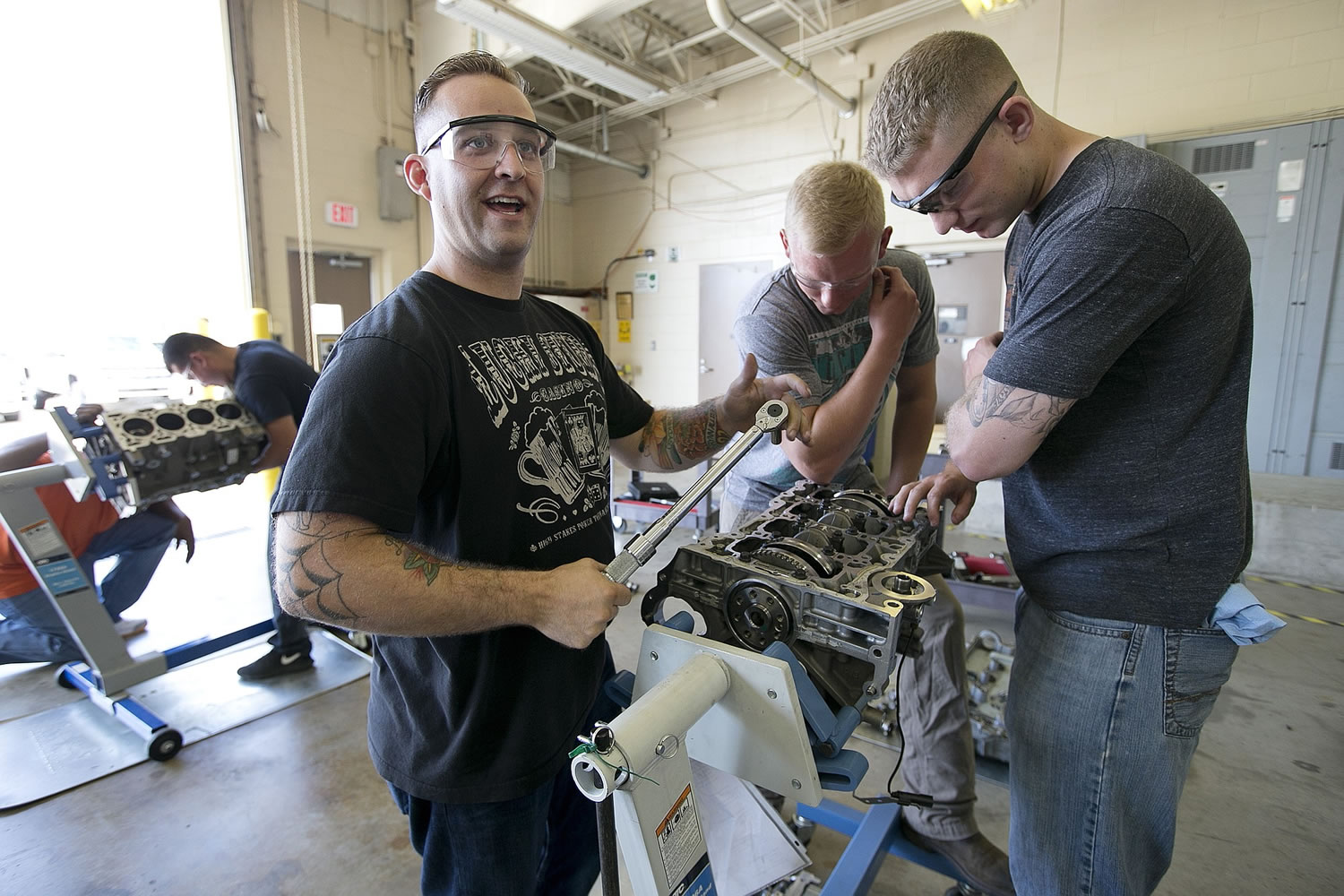WASHINGTON — U.S. employers added a solid 215,000 jobs in July, signaling a steadily rising job market and likely nudging the Federal Reserve closer to raising interest rates in September.
The Labor Department also said Friday that the unemployment rate held at a relatively low 5.3 percent for a second straight month.
Monthly job growth has averaged 211,286 so far this year, indicating that employers are confident that the six-year recovery from the Great Recession will sustain strong consumer demand and require more workers.
July’s job growth roughly matched expectations, and the early reaction on Wall Street before trading opened was muted. The Standard & Poor’s 500 stock index slipped 0.2 percent in morning trading, and U.S. government bond yields fell slightly after an initial spike.
“Another solid jobs report suggests the economy is gaining strength and keeps the Fed on track to raise rates as early as the next meeting” in September, Sal Guatieri, senior economist at BMO Capital Markets, said in a research note.
Hiring has remained robust even though the economy’s overall growth rate has been subpar and pay raises have been modest for many workers. Average hourly earnings in July increased just 2.1 percent from a year earlier.
The Fed has held its key short-term rate near zero since late 2008, a policy introduced after the financial crisis to try to energize the economy through stronger borrowing, investing and spending. Now, more than a half-dozen years into the recovery, Fed Chair Janet Yellen has suggested that the economy not only can tolerate but needs higher rates.
Even as the Fed has nearly concluded that the economy is strong enough to withstand higher borrowing rates, many Americans remain anxious about a recovery defined by modest economic growth and meager pay raises.
The misgivings about the economy were on display Thursday night at the first Republican presidential debate, where 10 candidates in Cleveland discussed the challenges of an unwieldy tax code and the pressures on American workers resulting from immigration and global trade.
The economy grew at an anemic 1.5 percent annual rate in the first half of 2015 — nearly half a percentage point weaker than the average of the past three years.
Companies are laying off fewer and fewer workers: The monthly average of people seeking unemployment benefits remains nears a 15-year low, the government said Thursday. But average hourly wage growth of 2.1 over the past year has barely exceeded low inflation.
The pace of hiring has managed to help revive housing and auto sales, according to industry reports. Still, the absence of significant pay raises has limited the consumer spending that accounts for a majority of economic activity.
Still, the jobs report indicated that companies are anticipating higher consumer spending. Retailers added 35,900 workers last month and restaurants 29,300.
Rising home sales helped boost construction jobs by 6,000. Manufacturers added 15,000 employees, with food, plastics and rubber factories accounting for most of the increase.
Job security also appears to be improving. The business services sector — which embraces everything from lawyers to accountants to engineers — added 40,000 workers, even though the number of temporary employees on short-term contracts fell 8,900.
Lower gasoline and oil prices have yet to provide the kind of boost they have in the past. Energy companies responded to oil of less than $50 a barrel by cutting orders for equipment and pipelines, causing many manufacturers to slow their hiring. And instead of spending their savings at the gasoline pump, consumers have mostly pocketed the additional cash.
A strong dollar has also weighed on economic growth. The dollar has risen about 14 percent in value against overseas currencies in the past year, thereby cutting into exports by making U.S. goods costlier overseas.
Falling unemployment usually reduces the number of people available to hire, which then forces employers to boost wages. But many frustrated job seekers have stopped looking for work, perhaps only temporarily. This has made it hard to assess just how healthy the job market is and when pay might rise at a faster rate.
Roughly 8.3 million Americans are still looking for jobs. An additional 14.4 million people have left the job market — either abandoning their job searches or choosing to retire — since the recession officially began in late 2007. The result is that the share of adults working has fallen to 59.3 percent from 62.7 percent eight years ago.
One challenge is that workers have become less productive for each hour worked. This limits the willingness and ability of many companies to raise pay significantly, which can then prevent people sidelined by the recession from returning to the job market.
Productivity fell at a 3.1 percent annual rate in the first three months of 2015.



